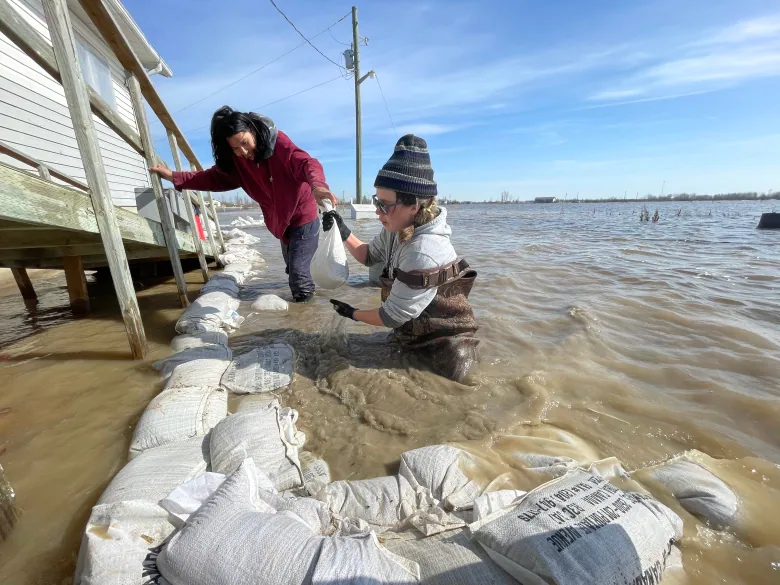The federal government has spent at least $24 million since 2006 to help Peguis First Nation fight floods, recover from floods and prepare for future floods on the Fisher River.
However, Peguis Chief Glenn Hudson estimates the total tab for permanent flood protection at his northern Interlake community will exceed $100 million — and charges Ottawa is reluctant to spend the money.
“We need to look at being treated like any other municipality or any other city here in Manitoba,” said Hudson, whose community of 3,053 people has been flooded six times over the past 18 years, including this spring.
Less frequent flooding in southern Manitoba led three levels of government to ensure every community along the Red River is protected by ring dikes following the 1997 flood of the century. All have fewer residents than Peguis.
However, the physical layout of Peguis, which stretches for kilometres along either side of the Fisher River about 180 kilometres north of Winnipeg, belies an elegant flood-protection solution such as a ring dike.
A study conducted by engineering consultant AECOM Canada in 2006 and updated in 2015 looked at holding back water upstream, raising the level of homes, building dikes and excavating a diversion channel for the river.
None of those options alone were deemed suitable for solving all of Peguis’s problems.
“The AECOM Canada study concluded mitigation measures were possible, but would likely cost several hundred million dollars and would likely not prevent all types of flooding such as overland flooding,” Indigenous Services Canada said in a statement.
The federal agency says it spent $3.3 million on that study. It also says it has spent $5 million helping Peguis fight floods and recover from them since 2010, and another $4.6 million on long-term flood-mitigation measures.
Indigenous Services Canada also says it has spent or earmarked $11 million to replace flooded homes.
“Although there has been a significant amount of work done, ISC acknowledges there is still more to do, and will continue to support Peguis First Nation as they continue to rebuild,” the agency said in a statement.

Hudson says he wants the federal government to approve construction of a diversion channel. He says the waterway, which would cost $90 million to construct, would eliminate most of the flooding damages at Peguis.
“A diversion would take care of a lot of these issues,” Hudson said.
The chief says replacing housing will cost another $10 million. He rejected the idea of dismantling homes in areas that flood the most frequently, the way cities such as Grand Forks, N.D. have done with low-lying, flood-prone neighbourhoods.
“When it is condemned, we need to look at getting rid of the home. But when it comes down to the locations, people do have river lots along the Fisher River where this flooding has happened,” he said. “They don’t want to relocate because they’ve lived there and their families lived there for decades.”
Hudson says id he’d like to see the Manitoba raise Provincial Road 224, which runs through Peguis and has been breached repeatedly by floodwater.
Neither the provincial government nor the federal government have agreed to fund flood-mitigation projects at Peguis, though cabinet ministers for both stated this week they are open to the idea.
Hudson says the frequency of flooding Peguis has endured would not be allowed in a non-Indigenous community.
“It boils down to systemic racism. It boils down to attitudes toward us as First Nation — and those attitudes need to change,” he said.
Reference-www.cbc.ca